I miss Pat Conroy. No, we never met. But like so many people, I felt like I knew him. Now that he’s gone, I’m making a pilgrimage of sorts to his hometown of Beaufort, South Carolina. I want to see the neighborhood where he spent his happiest years, visit the places he went for inspiration, and meet the people who knew him best. For though he was prolific, I suspect much of Pat’s story remains unwritten, hidden in plain sight among the antebellum homes and live oaks of this Lowcountry town.

Pat Conroy and his best friend, Bernie Schein, were walking past an oak tree. It was one they passed often on Bay Street, strong and full, with mossy arms that stretched over the banks of the Beaufort River. They were five minutes from the Point, their neighborhood set along the eastern edge of Beaufort, South Carolina. Stately homes framed the horizon and fishing boats glided past. They were both in their early twenties, old enough to have seen some of the world and too young to realize they weren’t experts on the subject.
“Stop and look at this,” Bernie recalls Pat telling him that day in 1968. “This is f—ing beautiful. Have you ever seen anything like this?”
Bernie, a third-generation Beaufort resident, only nodded. It was his home after all, his view, the wallpaper of his childhood. But to Pat, a military brat who’d fallen into the arms of Beaufort as a battered, sensitive fifteen-year-old, it was as close to paradise as he hoped to come.
“People ask me, ‘How did you come to appreciate the beauty of Beaufort?’” Bernie says. “I say it’s because Pat told me to.”
I’m driving from Atlanta to Beaufort. It’s May, two months since Pat died suddenly from pancreatic cancer at the age of seventy. I’m traveling to Beaufort to write a story on the town Pat loved, a place I’ve visited before but know best through his books.

Gabriel Hanway
I never met Pat. At least not with a handshake and an exchange of names. But I got to know him in The Lords of Discipline, the voice of a tortured Citadel plebe with disarming wit and a fierce sense of justice. I was his ally in The Water Is Wide and his friend in The Prince of Tides. In Beach Music, I fell in love with the Pat whose Jack McCall fell so deeply in love with Shyla Fox. I reread the last chapter of that book so many times, weeping afresh with each turning of the final page, my husband threatened to throw it away. I couldn’t finish South of Broad because I found it overwrought, and I couldn’t stomach The Death of Santini because parts of it felt too familiar. But through it all, I felt as if I got to know Pat.
I exit I-95, traveling past miles of car dealerships and shopping plazas as I roll toward the coast. When I turn onto Boundary Street, which leads into historic downtown Beaufort, commercial strips yield to nineteenth-century buildings. Horse-drawn carriages loaded with tourists clop down cobblestone roads, moss dangling above their paths. The roads are laid out in a grid and lined with restaurants, shops, and galleries. Those along Bay Street offer views of the marshy Beaufort River, which originates thirteen miles south at the mouth of Port Royal Sound.
When Pat attended high school here in the early sixties, Beaufort was a military town with a booming fishing industry. Today, it’s a popular tourist destination. There are carriage tours and boat tours, wine walks, and historical runs. More than 700,000 visitors came here last year, pumping $100 million into the local economy. And while there’s no one reason people travel to Beaufort, Mayor Billy Keyserling gives much of the credit to his longtime friend, Pat Conroy. “He’s done great, great things for tourism in this city,” he tells me over breakfast my first morning in Beaufort. “He really understood this place.”
“My wound is my geography,” Pat Conroy wrote in the prologue to The Prince of Tides. “It is also my anchorage, my port of call.”
Pat wasn’t just a novelist from Beaufort; he was the town’s beloved, if occasionally blistering, son. He wrote of its landscape in language so effusive, New York critics sometimes cringed. He also portrayed its racial tensions and social peculiarities in storylines so incisive, he was at times afraid to show his face in town. Pat didn’t spend his entire adult life in Beaufort—there were stints in Atlanta, San Francisco, Italy—but it was the place to which he ultimately returned, buying a house on nearby Fripp Island in the early nineties. In 2012, he and his third wife, writer Cassandra King Conroy, settled into a modest Beaufort home on the marsh.
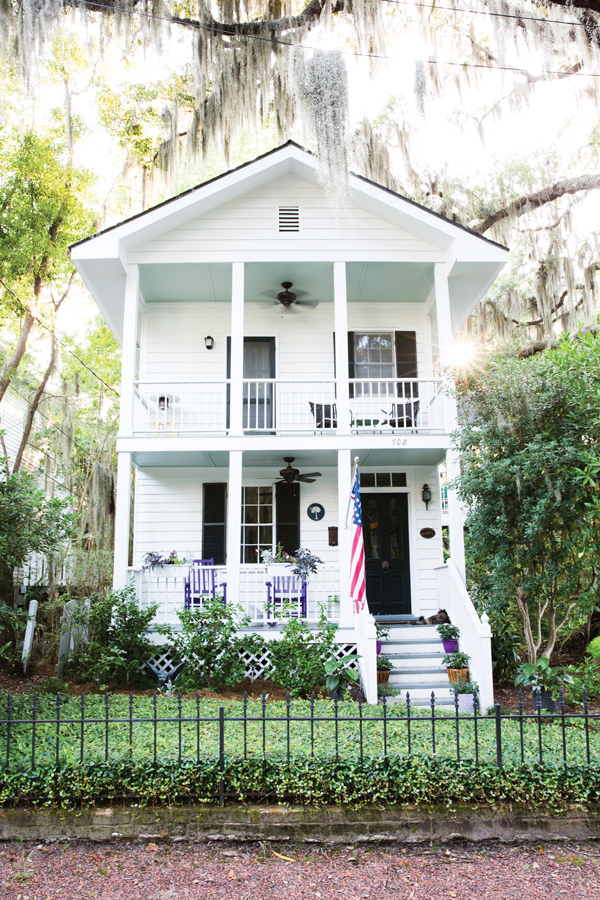
Gabriel Hanway
By then, Barbra Streisand, Nick Nolte, and Blythe Danner had come and gone from the Point, where they filmed the Oscar-nominated 1991 adaptation of The Prince of Tides. But another star had risen. Tour guides pointed out 403 Hancock Street, where Pat lived when he wrote The Boo, The Water Is Wide, and portions of The Great Santini. Even the ice cream shop on nearby Lady’s Island boasted a Prince of Tides flavor. In Pat, Beaufort had a bona fide celebrity of its own, and all the pesky rabblerousing that helped make him one was forgiven.
Those close to him say Pat enjoyed that his books lured people to Beaufort, boosting small businesses and making old pals like Mayor Billy happy. “He was so loyal,” Pat’s longtime editorial assistant Margaret Evans tells me over dinner. “Pat loved this place because it embraced him and welcomed him home. He’d never had a home.” Indeed, last October, the whole town threw him a seventieth birthday party. Nearly 400 people showed up to celebrate.
I’m in the passenger seat of Bernie Schein’s Honda, driving around the Point. Historic homes, from tidy cottages to grand waterfront estates, line the wide, tree-shaded streets. “I’m going to give you the Pat tour,” he tells me as warm air blasts through our open windows.
It’s questionable whether anyone knew Pat better than Bernie. When they were teenagers, Bernie invited Pat to his very first party. When they were young men, they drank their way around Europe and made sweeping declarations about the way things were and the way they ought to be. “We are both emotional and pretentious as s–t,” Bernie says, referring to Pat in the present tense, as he continues to do.
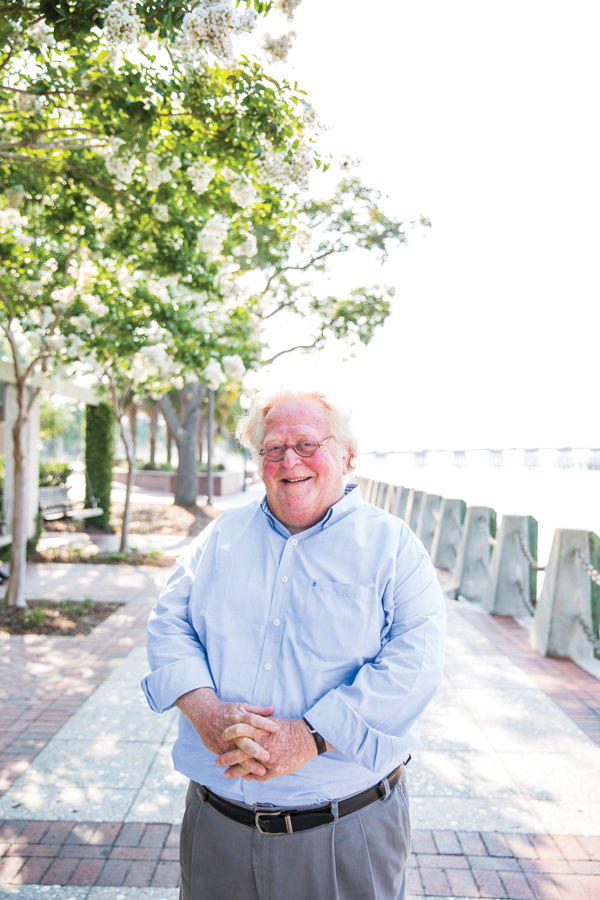
Gabriel Hanway
In the seventies, Pat and Bernie lived in Atlanta, enrolling their children in the Paideia School, where Bernie was a middle-school teacher. In 2006, Bernie joined Pat back in Beaufort, and in 2014, Pat published Bernie’s novel, Famous All Over Town, under his imprint, Story River Books. Around this time, they began meeting for lunch every Thursday at Griffin Market, an Italian eatery next to the Point, where they were joined by others from their inner circle (including longtime friends Mike Jones and George Garbade). Lunch could last hours, a raucous meal marked by laughter and a loud trading of insults. So faithful were they in maintaining this tradition, fans began requesting Thursday lunch reservations at Griffin Market too, hoping to get Pat’s autograph or overhear one of his legendary barbs. “Pat put us on the map,” says owner Riccardo Bonino. After Pat died, Bonino stopped serving lunch on Thursdays to honor his best customer.
“Here’s Tim’s house,” Bernie says, idling the Honda in front of 505 Port Republic, a yellow one-story home with a simple front porch. This, Bernie tells me, is where Tim Belk lived in his early twenties, when he taught English at the University of South Carolina Beaufort. Tim and Pat, then a teacher at Beaufort High School, became friends, and every day after work, they met on this porch to read the paper, drink martinis, and listen to Tim’s beloved symphony albums. They were often joined by Bernie, Mike, and George. “We were lustful about learning and competitive as hell,” Bernie says, staring at the empty porch. “Tim was our first gay friend.”

Gabriel Hanway
Tim appeared as himself in The Water Is Wide, inspired the character of Tradd St. Croix in The Lords of Discipline, and was Trevor Poe in South of Broad. In 2014, the real Tim died of complications from AIDS. “He was a huge figure in our lives,” Bernie says. “Tim and the rest of us who sat on this porch figured heavily into Pat’s final unpublished novel.”
I’d first heard about this novel from Margaret Evans. It was a beauty of a book, she told me. “Vintage Pat Conroy.” But it wasn’t complete when he died, and it’s uncertain how or when it will be published.
I mention this to Bernie, who sighs. “It’s a shame,” he says, shifting the car into drive. We cruise six blocks to the Green, a small park with a sweeping live oak in its southwest corner. It was under this tree that a twenty-something Pat found his father, the Great Santini, passed out one evening. After his father awoke, Pat shocked them both by telling Donald Conroy he loved him, much to his father’s chagrin. Pat fictionalized these events in The Great Santini, and Robert Duvall and Michael O’Keefe reenacted them beneath the same oak in the movie. But Bernie tells me Pat didn’t initially write the story this way.
“I was reading an early draft of the book, and there was a page crossed out,” he says. “What he really wrote was that he found him on the Green passed out, and he actually pummeled his dad’s face to smithereens. I realized, ‘Holy Christ, this is the way he really feels.’” Bernie urged him to leave the part in, but Pat refused. It was the seventies in Beaufort, South Carolina, and no one talked about abuse, much less the blind rage it often sowed in its victims.
We continue the Pat tour, passing Saint Helena’s, the 1712 Anglican church where Pat married his first wife, Barbara; the Tidalholm mansion at 1 Laurens Street, where most of The Great Santini was filmed (it was also the setting for The Big Chill); and 708 East Street, where Blythe Danner and her young daughter, Gwyneth Paltrow, stayed in 1990 during the filming of The Prince of Tides. “Pat likes to tell everyone that he put Gwyneth on his knee and said, ‘One day, you’re going to be a great actress,’” Bernie says, shaking his head.

I’m strolling the grounds of Penn Center, an African American cultural site on nearby Saint Helena Island that captured Pat’s affections when he was just fifteen. He was introduced to the place by his high school English teacher and mentor Eugene Norris; during one visit, he met Dr. Martin Luther King Jr. (King wrote portions of his “I Have a Dream” speech inside a home on the grounds.)
Penn Center’s roots trace back to the Civil War. In 1861, 12,000 Union soldiers sailed into Beaufort’s harbor, taking over the town in the Battle of Port Royal Sound. There wasn’t much of a fight: Beaufort’s whites, many of them cotton plantation owners, fled en masse; left behind were an estimated 10,000 slaves. Overnight, they became freemen in the heart of war-torn South Carolina.
Quakers Laura Towne and Ellen Murray, upon hearing what happened in Beaufort, arrived from Pennsylvania to educate the former slaves and teach them self-sufficiency. They formed the Penn School, now Penn Center, which became the centerpiece of what some whites called the “Port Royal Experiment.”
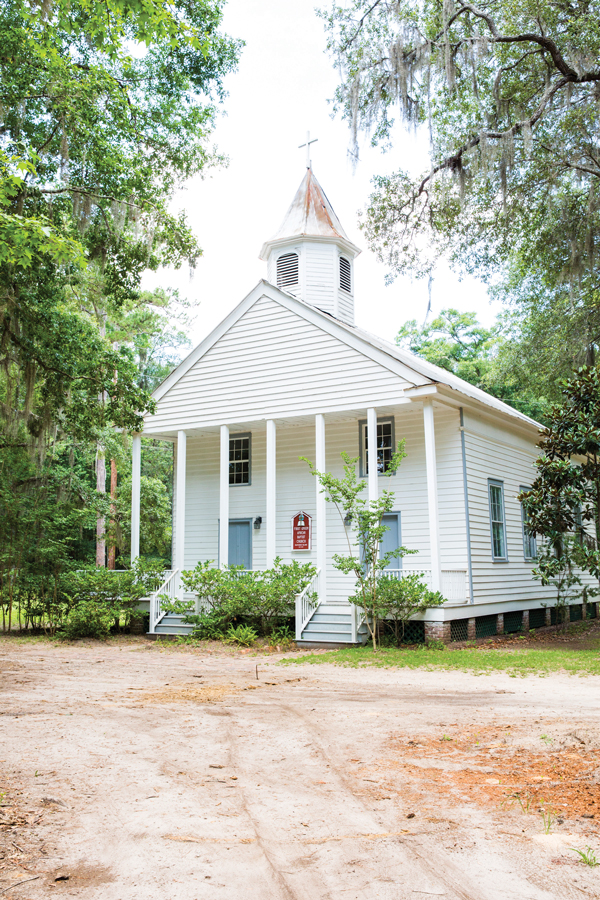
Gabriel Hanway
The experiment worked. So well, in fact, that after the Civil War, Beaufort became an affluent town run by black political leaders, most notably Robert Smalls. Its economy was bolstered both by the Navy base on Parris Island and the Yankee merchants who had settled in the area during the war. “The Reconstruction period was remarkably prosperous here,” says Dr. Lawrence Rowland, a local historian.
The good times didn’t last—a hurricane plowed through Beaufort in 1893, destroying most of its infrastructure—but the growth of the Marine Corps installation on Parris Island during World War II pulled the city to its feet. Now, it’s tourism that keeps Beaufort moving—buoyed by national historic sites like Penn Center, antebellum homes Sherman had no reason to burn, and a Lowcountry writer who told the world about them all.
As I peer into the carefully preserved buildings at Penn Center—the gymnasium, the dining hall, the industrial shop—I imagine Pat here, learning about the Port Royal Experiment. In 1968, he began an experiment of his own, attempting to reshape the failed educational system for Gullah children on nearby Daufuskie Island. After nine months, he was fired for insubordination, having abandoned the school’s guidelines (which included corporal punishment) in favor of more progressive tactics (such as taking them on a field trip to Washington, D.C.). His beloved Penn Center turned against him, backing the Beaufort County Board of Education when Pat protested his firing. It was a move that wounded him deeply.
But in 2011, Penn Center made something of an about-face and inducted Pat into its prestigious 1862 Circle, calling upon one of his former Gullah students to present the award. During the ceremony, Pat received a standing ovation.
Daufuskie Island is a hot, dusty contradiction of a place. Before Union soldiers occupied it in 1861, its ten square miles were home to seven cotton plantations with hundreds of slaves between them. After the slaves were freed, many remained on the island and worked as paid laborers on former plantations or farmed their own land. In the 1920s, the boll weevil decimated the island’s cotton crop, and many of Daufuskie’s black residents left for the mainland. Most who stayed found work shucking Daufuskie’s plentiful oysters, a delicacy so prized, the czar of Russia was rumored to have ordered them for an imperial banquet.

Gabriel Hanway
But in the 1950s, pollution originating in the nearby Savannah River seeped into Daufuskie’s oyster beds, rendering the once-precious mollusks worthless. More residents left, and those who stayed lived as a people virtually removed from civilization. Called Gullahs, they spoke a language that combined West African dialects and English, hunted and fished for food, and sent their children to a two-room schoolhouse where teachers emphasized rule-following over reading and writing.
That’s where Pat came in. Commuting to the island by boat each week, he taught kids as old as thirteen which country they lived in and how to spell their names. Four years later, he introduced Daufuskie to the larger world in his novel The Water Is Wide.
Today, nearly all of Pat’s former students have left the island. In fact, only about fifteen Gullahs remain, many so old they rarely leave the confines of their shotgun homes. When they die, many fear Daufuskie’s Gullah culture will persist in memory alone. Already, the northern end of the island is home to Haig Point, an upscale residential community with its own ferry service to Hilton Head. Even the musician John Mellencamp has a house here, plus a custom dock for his yacht.
Still, the island is far from developed. There are no bridges connecting it to the mainland and only one public dock. Most of the roads are dirt, and there are no streetlights, hospitals, or police. Much of the island remains densely forested. Reminders of the island’s Gullah heritage are visible at twenty or so historical points of interest, including a Gullah cemetery and the school where Pat taught. It is still, as Pat wrote, a place that feels “aloof and apart from the world beyond the river.”
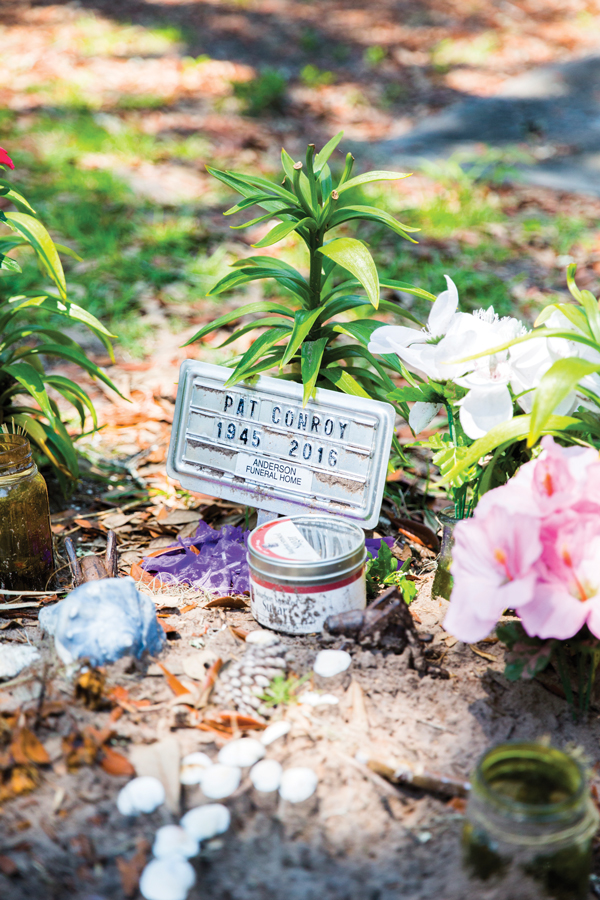 I’ve returned to Saint Helena and am wandering its namesake memorial gardens near Penn Center, searching for Pat’s grave. I do not feel like a trespasser in this historical black cemetery, looking for the final resting place of a man who did not know my name. Pat understood people would come to see his gravesite and pay their respects. It’s one of the reasons he chose to be buried here. “He realized people would make pilgrimages to his grave, and that might draw them to Penn,” Margaret Evans told me.
I’ve returned to Saint Helena and am wandering its namesake memorial gardens near Penn Center, searching for Pat’s grave. I do not feel like a trespasser in this historical black cemetery, looking for the final resting place of a man who did not know my name. Pat understood people would come to see his gravesite and pay their respects. It’s one of the reasons he chose to be buried here. “He realized people would make pilgrimages to his grave, and that might draw them to Penn,” Margaret Evans told me.
He was buried only a few weeks ago, and I’ve been told there’s no headstone in place yet. I spot such a grave adorned with flowers and draped with ribbons, and I approach it expectantly. But it doesn’t belong to Pat.
I begin to search row by row, scanning the markers for Pat’s name. The grounds are pocked with anthills; some plots are covered with fallen leaves. After twenty minutes of walking, I find him.
Pat Conroy, a small stone reads. 1945-2016. Seashells have been scattered on the mound of earth, and an assemblage of pinecones seem placed there on purpose.
Looking at his grave, I feel a tightening in my chest. I wish I’d met this man, a fiery Irish Catholic who’d decided to be buried in a quiet African American cemetery—and who’d invited more than 300 graduates from his alma mater, the Citadel, to attend his funeral. He’d excoriated the Citadel, he’d been wounded by Penn Center, yet he’d chosen them both to attend his passage into the hereafter.
That was his genius, after all: turning life’s tragedies and terrors into something redemptive, oftentimes with a touch of twisted humor. It’s what drew people like me to his books, to him, and ultimately to Beaufort. “Goodbye, Pat,” I tell him. And I depart Saint Helena, leaving the gate open as I go.
A Festival for Pat
To honor the writing life of Pat Conroy, the University of South Carolina Press and the University of South Carolina Beaufort Center for the Arts will host the Pat Conroy Literary Festival October 20-23. The event’s theme, “place as character and muse in Southern literature,” is appropriate, considering most events are held in Pat’s beloved hometown of Beaufort. Take the “Pat Tour” with Bernie Schein and his daughter Maggie Schein; explore Daufuskie Island with Pat’s former student Sallie Ann Robinson; and enjoy panel discussions with Lowcountry writers such as Roger Pinckney and Nathalie Dupree. patconroyfestival.com –Aadithya Prem







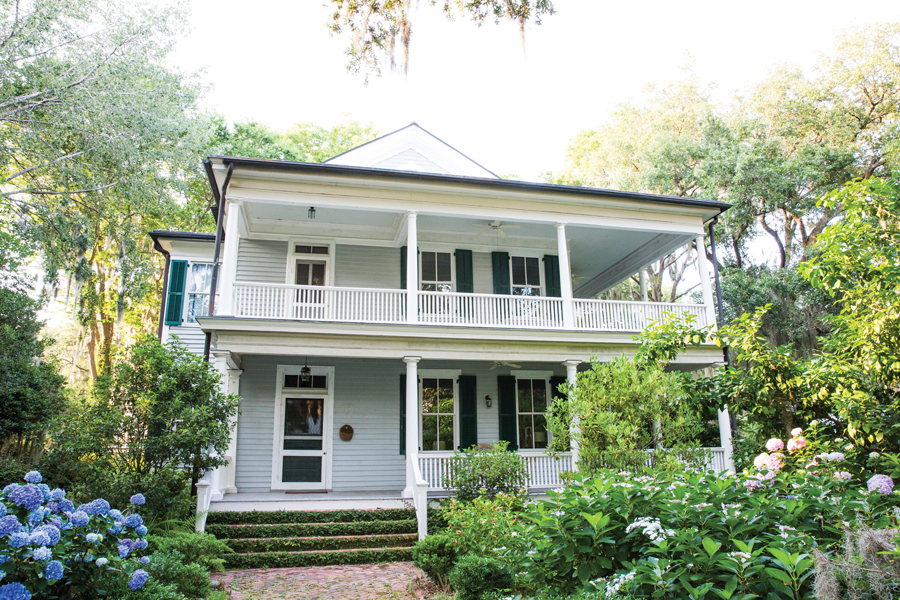
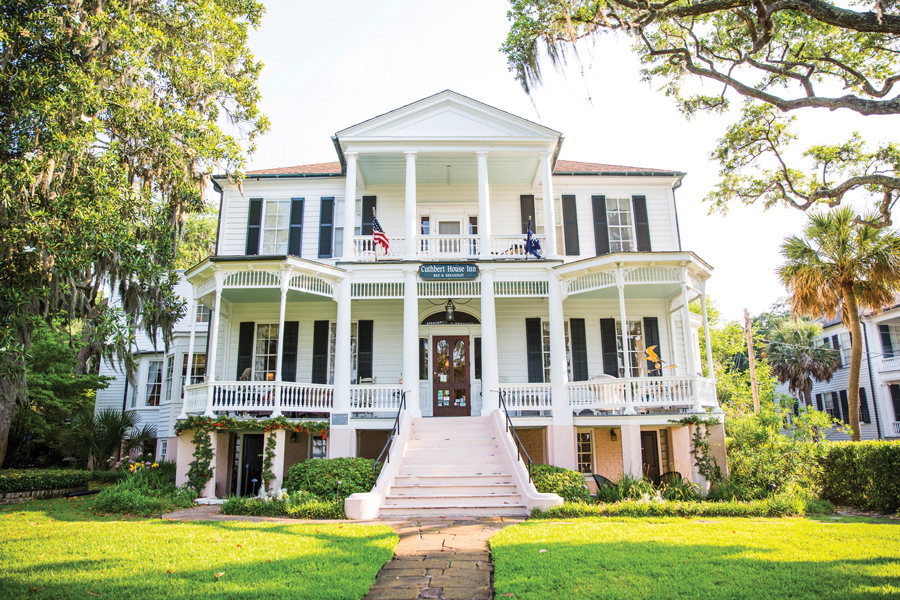











![The North Carolina Museum of Natural Sciences’ newest exhibit is a [pre]historic first](https://cdn2.atlantamagazine.com/wp-content/uploads/sites/4/2024/04/DD-3-100x70.jpg)


